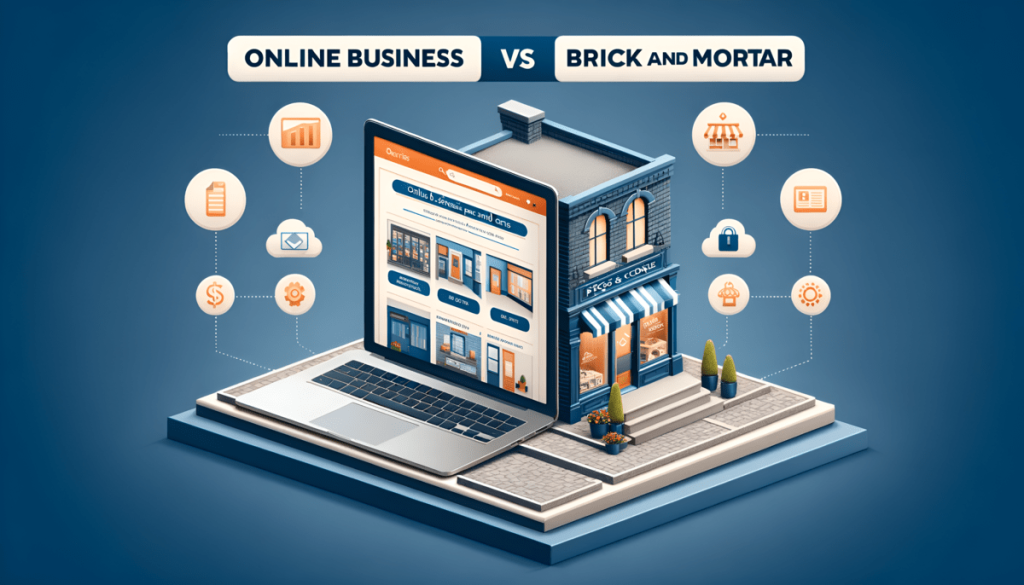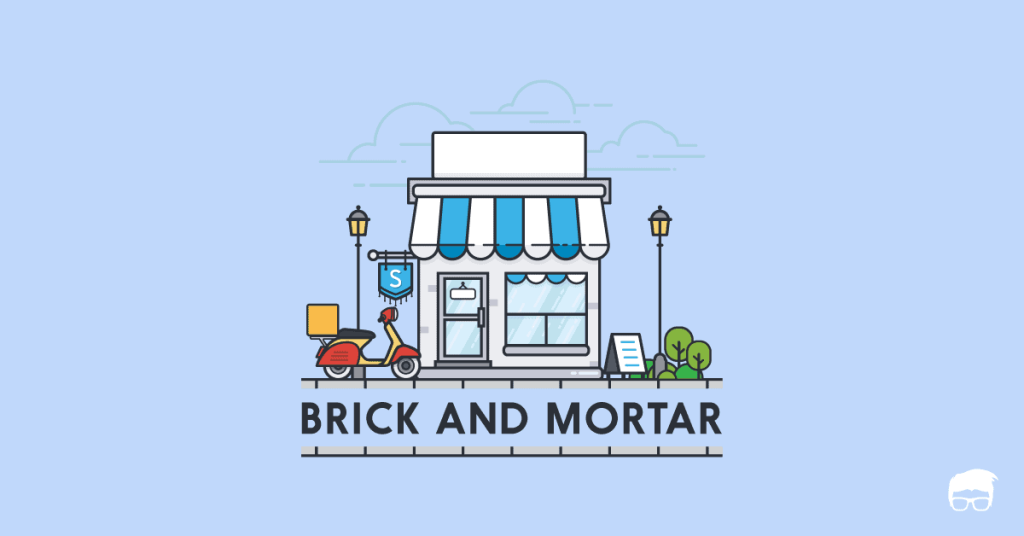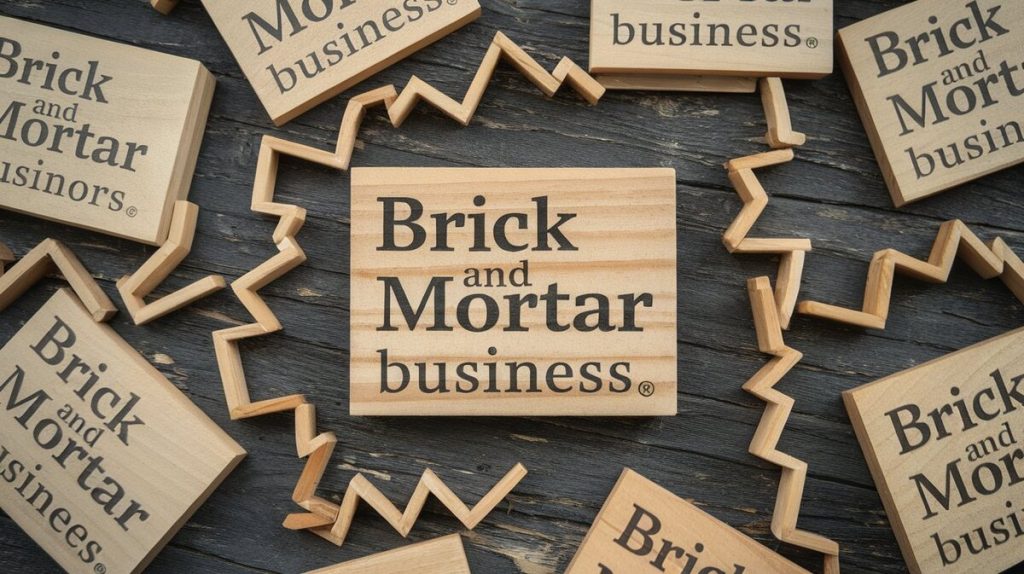Introduction
In today’s e-commerce-driven economy, the term “brick-and-mortar” distinguishes businesses with physical locations from their online-only counterparts. Despite the rise of digital shopping, brick-and-mortar establishments continue to be significant in various industries, offering experiences that online platforms cannot replicate.
This guide will explore the definition, advantages, challenges, and future of brick-and-mortar businesses, supported by data and examples.
What is a Brick-and-Mortar Business?
Brick-and-mortar refers to businesses operating from physical locations where customers can engage directly with products or services. This term is used to contrast these businesses from online-only ventures.
Examples include:
- Retail Stores: Walmart, Target
- Banks: Chase, Bank of America
- Service Providers: Hair salons, gyms, restaurants
Table 1: Brick-and-Mortar vs. Online Businesses
| Feature | Brick-and-Mortar | Online Businesses |
|---|---|---|
| Customer Interaction | Face-to-face | Digital |
| Operating Costs | High (rent, utilities, staff) | Lower (web hosting, fewer employees) |
| Reach | Local/Regional | Global |
| Payment Methods | Cash, credit/debit cards | Credit/debit cards, digital wallets |
| Customer Experience | Physical interaction | Visual and auditory |
Historical Context and Evolution
Brick-and-mortar businesses have been central to commerce for centuries, evolving from ancient marketplaces to modern retail stores. The rise of the internet introduced e-commerce, a significant competitor to traditional retail. Despite the convenience of online shopping, many consumers still value the tangible experience offered by brick-and-mortar stores.
In 2023, U.S. brick-and-mortar sales exceeded $4.7 trillion, showing their continued relevance. Although e-commerce is growing, physical stores remain critical, particularly in industries like groceries, fashion, and automotive.
Examples of Brick-and-Mortar Businesses
Brick-and-mortar businesses are diverse. Key examples include:
- Retail Chains: Walmart operates more than 11,500 stores worldwide.
- Grocery Stores: Trader Joe’s thrives on customer loyalty through in-person interactions.
- Service Providers: Many services, such as haircuts and repairs, rely on physical locations to serve customers.
Table 2: Sector-wise Distribution of Brick-and-Mortar Businesses in the U.S. (2023)
| Sector | Number of Locations (Approx.) | Percentage of Total Brick-and-Mortar Businesses |
|---|---|---|
| Retail | 1.5 million | 45% |
| Healthcare | 900,000 | 27% |
| Food Services | 600,000 | 18% |
| Financial Services | 300,000 | 9% |
| Others | 200,000 | 1% |

Comparison with Online-Only Businesses
Brick-and-mortar and online-only businesses operate differently. Online businesses benefit from lower operational costs and global reach, while brick-and-mortar stores offer unique advantages.
Advantages of Brick-and-Mortar:
- Physical Interaction: Customers can engage directly with products, crucial for items like clothing and groceries.
- Instant Access: Purchases can be taken home immediately.
- Customer Trust: A physical presence often fosters greater consumer trust.
However, operating a physical store involves challenges like higher costs for rent, utilities, and staff. To remain competitive, many brick-and-mortar businesses are adopting omnichannel strategies that integrate online and offline experiences.
Chargeback prevention is also critical. Merchanto.org, an official partner of VISA and MasterCard, offers solutions to help brick-and-mortar businesses protect their revenue. Learn more at Merchanto.org.
Advantages and Disadvantages
Advantages of Brick-and-Mortar:
- Enhanced Customer Experience: In-person shopping allows customers to engage with products in ways that online platforms cannot match.
- Brand Loyalty: Physical stores can build strong community ties and customer loyalty.
- Cross-Selling Opportunities: Retailers can strategically place products to encourage additional purchases.
Disadvantages:
- High Operating Costs: Maintaining a physical location involves significant expenses, including rent, utilities, and staff salaries.
- Limited Reach: Brick-and-mortar stores typically serve local or regional markets.
- Economic Vulnerability: Physical stores are more susceptible to economic downturns, as seen during the COVID-19 pandemic.
Table 3: Operational Costs for Brick-and-Mortar vs. Online Businesses (Average Annual Costs in the U.S.)
| Cost Category | Brick-and-Mortar (in $) | Online Business (in $) |
|---|---|---|
| Rent | 120,000 | N/A |
| Utilities | 24,000 | 6,000 |
| Staffing | 180,000 | 60,000 |
| Maintenance | 15,000 | 1,200 |
| Total | 339,000 | 67,200 |

The Future of Brick-and-Mortar
The future of brick-and-mortar businesses lies in innovation and adaptation. These businesses are increasingly adopting omnichannel strategies, blending online and offline experiences to remain competitive.
Key Trends:
- Omnichannel Retailing: Companies like Walmart and Target are leading the way by offering services like in-store pickups for online orders.
- Experiential Retail: Stores are evolving into spaces for experiences, with brands like Apple and Nike redefining their retail spaces as hubs for community engagement.
- Sustainability Initiatives: Consumers are favoring businesses that adopt eco-friendly practices, and brick-and-mortar stores are responding by incorporating sustainable materials and energy-efficient technologies.
Statistics:
- Omnichannel shoppers have a 30% higher lifetime value than those who shop using only one channel.
- By 2025, experiential retail is expected to grow by 15% annually.
Conclusion
Brick-and-mortar businesses continue to play a vital role in the economy despite the challenges posed by the digital revolution. Their ability to offer in-person experiences and immediate product availability makes them indispensable in certain sectors.
Key takeaways:
- Brick-and-mortar businesses are defined by their physical presence and direct customer interaction.
- Historical significance: These businesses have adapted over centuries and continue to evolve alongside technological advancements.
- Comparison: While online businesses offer convenience, brick-and-mortar stores provide sensory experiences that cannot be replicated digitally.
- Future trends: Omnichannel strategies and experiential retail are key to the future success of these businesses.
By understanding the strengths and challenges of brick-and-mortar businesses, stakeholders can navigate the complexities of today’s marketplace and ensure their operations thrive well into the future.



